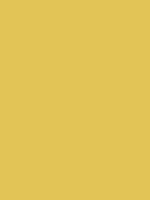#e1c256 Color Information
In a RGB color space, hex #e1c256 is composed of 88.2% red, 76.1% green and 33.7% blue. Whereas in a CMYK color space, it is composed of 0% cyan, 13.8% magenta, 61.8% yellow and 11.8% black. It has a hue angle of 46.6 degrees, a saturation of 69.8% and a lightness of 61%. #e1c256 color hex could be obtained by blending #ffffac with #c38500. Closest websafe color is: #cccc66.
-
- R 88
- G 76
- B 34
-
- C 0
- M 14
- Y 62
- K 12
● #e1c256 color description : Soft yellow.
#e1c256 Color Conversion
The hexadecimal color #e1c256 has RGB values of R:225, G:194, B:86 and CMYK values of C:0, M:0.14, Y:0.62, K:0.12. Its decimal value is 14795350.
| Hex triplet | e1c256 | #e1c256 |
|---|---|---|
| RGB Decimal | 225, 194, 86 | rgb(225,194,86) |
| RGB Percent | 88.2, 76.1, 33.7 | rgb(88.2%,76.1%,33.7%) |
| CMYK | 0, 14, 62, 12 | |
| HSL | 46.6°, 69.8, 61 | hsl(46.6,69.8%,61%) |
| HSV (or HSB) | 46.6°, 61.8, 88.2 | |
| Web Safe | cccc66 | #cccc66 |
| CIE-LAB | 79.194, -1.318, 57.004 |
|---|---|
| XYZ | 52.023, 55.265, 16.731 |
| xyY | 0.419, 0.446, 55.265 |
| CIE-LCH | 79.194, 57.02, 91.324 |
| CIE-LUV | 79.194, 26.387, 67.745 |
| Hunter-Lab | 74.34, -5.182, 38.695 |
| Binary | 11100001, 11000010, 01010110 |
Color Schemes with #e1c256
Alternatives to #e1c256
Below, you can see some colors close to #e1c256. Having a set of related colors can be useful if you need an inspirational alternative to your original color choice.
#e1c256 Preview
This text has a font color of #e1c256.
<span style="color:#e1c256;">Text here</span>This paragraph has a background color of #e1c256.
<p style="background-color:#e1c256;">Content here</p>This element has a border color of #e1c256.
<div style="border:1px solid #e1c256;">Content here</div>.text {color:#e1c256;}.background {background-color:#e1c256;}.border {border:1px solid #e1c256;}Shades and Tints of #e1c256
A shade is achieved by adding black to any pure hue, while a tint is created by mixing white to any pure color. In this example, #0e0c03 is the darkest color, while #fffefd is the lightest one.
-
#0e0c03
#0e0c03rgb(14,12,3) -
#1f1905
#1f1905rgb(31,25,5) -
#302708
#302708rgb(48,39,8) -
#40340b
#40340brgb(64,52,11) -
#51420e
#51420ergb(81,66,14) -
#625011
#625011rgb(98,80,17) -
#725d14
#725d14rgb(114,93,20) -
#836b17
#836b17rgb(131,107,23) -
#94781a
#94781argb(148,120,26) -
#a4861d
#a4861drgb(164,134,29) -
#b59420
#b59420rgb(181,148,32) -
#c5a123
#c5a123rgb(197,161,35) -
#d6af26
#d6af26rgb(214,175,38)
-
#dbb635
#dbb635rgb(219,182,53) -
#debc45
#debc45rgb(222,188,69) -
#e1c256
#e1c256rgb(225,194,86) -
#e4c867
#e4c867rgb(228,200,103) -
#e7ce77
#e7ce77rgb(231,206,119) -
#ead488
#ead488rgb(234,212,136) -
#edda99
#edda99rgb(237,218,153) -
#f0e0a9
#f0e0a9rgb(240,224,169) -
#f3e6ba
#f3e6bargb(243,230,186) -
#f6eccb
#f6eccbrgb(246,236,203) -
#f9f2db
#f9f2dbrgb(249,242,219) -
#fcf8ec
#fcf8ecrgb(252,248,236) -
#fffefd
#fffefdrgb(255,254,253)
Tones of #e1c256
A tone is produced by adding gray to any pure hue. In this case, #9c9c9b is the less saturated color, while #f8cf3f is the most saturated one.
-
#9c9c9b
#9c9c9brgb(156,156,155) -
#a4a093
#a4a093rgb(164,160,147) -
#aba48c
#aba48crgb(171,164,140) -
#b3a984
#b3a984rgb(179,169,132) -
#bbad7c
#bbad7crgb(187,173,124) -
#c2b175
#c2b175rgb(194,177,117) -
#cab56d
#cab56drgb(202,181,109) -
#d2ba65
#d2ba65rgb(210,186,101) -
#d9be5e
#d9be5ergb(217,190,94) -
#e1c256
#e1c256rgb(225,194,86) -
#e9c64e
#e9c64ergb(233,198,78) -
#f0ca47
#f0ca47rgb(240,202,71) -
#f8cf3f
#f8cf3frgb(248,207,63)
Color Blindness Simulator
Below, you can see how #e1c256 is perceived by people affected by a color vision deficiency. This can be useful if you need to ensure your color combinations are accessible to color-blind users.
